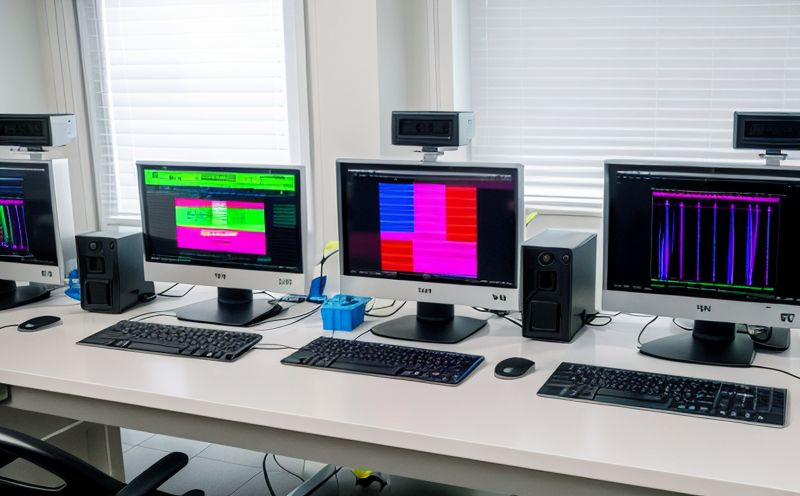WHO Guidelines Viral Safety Testing in Clinical Laboratories
The World Health Organization (WHO) guidelines on viral safety testing are pivotal in ensuring the integrity and reliability of biological products, especially those intended for human use. These guidelines are designed to protect public health by preventing the introduction or transmission of infectious agents during production, processing, and distribution processes.
Biological and microbiological testing plays a crucial role in achieving these objectives. Specifically, viral safety testing is aimed at detecting and quantifying viruses that could potentially compromise product safety. The WHO guidelines provide comprehensive protocols for conducting such tests, ensuring they are robust, reproducible, and compliant with international standards like ISO 17025.
One of the key aspects of viral safety testing is the identification of known pathogens. This involves using advanced molecular techniques, such as real-time polymerase chain reaction (RT-PCR), to detect specific nucleic acid sequences associated with viruses. These tests are not only sensitive but also highly specific, allowing for accurate detection even in trace amounts.
Another critical component is the quantification of viral load. This process involves determining the number of infectious units present in a given sample, which is essential for assessing potential risks. Quantitative PCR (qPCR) and other similar methods are commonly employed to achieve this. The results provide valuable information on the safety profile of the product under scrutiny.
The WHO guidelines also emphasize the importance of quality control measures throughout the testing process. This includes rigorous calibration procedures, regular validation of test methods, and adherence to strict sample handling protocols. These steps ensure that the test results are reliable and can be trusted for decision-making purposes.
A significant challenge in viral safety testing is ensuring the absence of false positives or negatives. The guidelines provide detailed instructions on how to minimize these risks through proper laboratory design, personnel training, and method validation. By following these protocols, laboratories can achieve high levels of accuracy and precision, which are crucial for maintaining public health standards.
The WHO guidelines also address the need for continuous improvement in testing methodologies. Advances in technology have led to the development of novel approaches, such as next-generation sequencing (NGS), which offer enhanced sensitivity and specificity compared to traditional methods. However, these new techniques must be validated against established criteria before they can be incorporated into routine testing.
In conclusion, adherence to WHO guidelines on viral safety testing is essential for ensuring the safety and efficacy of biological products. By implementing rigorous protocols and using advanced technologies, laboratories can provide accurate and reliable test results that contribute to public health protection. This approach not only meets regulatory requirements but also enhances trust in the industry.
Benefits
The implementation of WHO guidelines for viral safety testing offers numerous benefits across various sectors. For quality managers, these guidelines provide a standardized framework that ensures consistent and accurate results across different laboratories. This consistency is critical for maintaining product quality and ensuring compliance with international standards.
Compliance officers find the guidelines particularly useful as they offer clear directives on how to meet regulatory requirements. By following these protocols, companies can avoid costly penalties and legal issues associated with non-compliance. Moreover, adherence to WHO guidelines can enhance a company's reputation for excellence in quality management.
R&D engineers benefit from the guidelines by having access to robust testing methodologies that can inform product development decisions. The ability to detect and quantify viruses accurately allows researchers to identify potential risks early in the process, leading to safer products. This approach also facilitates innovation by enabling the exploration of new technologies and methods.
For procurement professionals, WHO guidelines provide a benchmark for selecting reliable suppliers. By ensuring that vendors adhere to these standards, companies can be confident in the quality of raw materials used in their products. This not only reduces the risk of contamination but also supports sustainable business practices.
In summary, the benefits of following WHO guidelines extend beyond regulatory compliance to include enhanced product quality, improved trust in the industry, and support for innovation and sustainability efforts.
Why Choose This Test
The choice of viral safety testing based on WHO guidelines is driven by several compelling reasons. Firstly, these tests are designed to meet stringent regulatory requirements, ensuring that products are safe for human use. The comprehensive nature of the guidelines ensures that all relevant factors are considered during the testing process.
Secondly, the accuracy and reliability provided by WHO-guided testing are crucial for maintaining public health standards. By detecting and quantifying viruses accurately, laboratories can prevent the spread of infectious diseases and protect vulnerable populations. This is particularly important in the context of vaccines and other biologics, where even small amounts of contamination could have severe consequences.
Thirdly, the guidelines offer a standardized approach that enhances consistency across different laboratories. This consistency is essential for ensuring that results are comparable and reproducible, which is vital for quality control purposes. It also allows for better coordination between regulatory bodies and industry stakeholders, fostering trust and cooperation.
Forth, the continuous improvement aspect of WHO-guided testing encourages innovation in biotechnology and pharmaceuticals. By staying abreast of the latest developments in molecular biology and virology, laboratories can adopt new technologies that enhance their testing capabilities. This forward-thinking approach ensures that products remain safe and effective as technology evolves.
Lastly, compliance with these guidelines is increasingly becoming a key factor in market entry for pharmaceutical companies. Many countries require adherence to international standards like WHO guidelines before approving the marketing of biologics. By choosing this test, companies can streamline their regulatory approval processes and enter new markets more efficiently.





